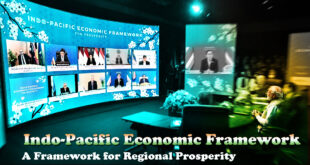Introduction
The Pradhan Mantri Awas Yojana (PMAY), launched in 2015, is a flagship initiative by the Government of India to achieve the vision of “Housing for All” by 2022. This essay will delve into the scheme’s objectives, provisions, achievements, challenges, and the way forward for its successful implementation.
Objectives
- Facilitate Affordable Housing: PMAY aims to bridge the gap between demand and supply of affordable housing units for economically weaker sections (EWS), low-income groups (LIG), and middle-income groups (MIG)
- Credit-Linked Subsidy: The scheme provides interest rate subsidies on home loans to incentivize banks and lending institutions to offer loans to beneficiaries.
- Inclusive Growth: PMAY promotes inclusive growth by creating employment opportunities in the construction sector and allied industries.
Provisions
- Two Components: PMAY comprises two main components:
- PMAY-Urban (PMAY-U): Focuses on urban housing through Credit Linked Subsidy Scheme (CLSS), Affordable Housing in Partnership (AHP), and In-Situ Slum Rehabilitation (ISSR).
- PMAY-Gramin (PMAY-G): Targets rural housing by providing financial assistance to eligible beneficiaries for constructing pucca houses.
- Eligibility: Beneficiary selection is based on income criteria and other parameters set by the government.
- Subsidy Rates: The interest subsidy varies depending on the income category of the beneficiary and the loan amount.
Achievements
- Increased Housing Stock: PMAY has led to a significant increase in the construction of affordable housing units across the country.
- Improved Living Standards: By providing access to pucca houses, PMAY has contributed to improved living standards and overall well-being of beneficiaries.
- Financial Inclusion: The scheme has facilitated financial inclusion by encouraging beneficiaries to avail of home loans from formal institutions.
Challenges
- Meeting Targets: Despite progress, achieving the initial target of 2 crore houses by 2022 remains a challenge.
- Land Acquisition: Delays in land acquisition and clearances often hinder project timelines.
- Beneficiary Awareness: Lack of awareness about the scheme and its eligibility criteria can limit its reach.
- Funding Constraints: Ensuring smooth flow of funds for project completion is crucial.
- Streamlining Approvals: Simplifying approval processes for land acquisition and construction permits can expedite project completion.
- Public-Private Partnership (PPP): Encouraging greater participation from private developers through attractive schemes can boost housing supply.
- Enhanced Awareness: Extensive outreach programs at the state and local levels can raise awareness among potential beneficiaries.
- Performance Monitoring: Robust monitoring mechanisms are essential to ensure transparency and timely project execution.
PMAY is a commendable initiative with the potential to transform the housing landscape in India. By addressing the existing challenges and adopting a multi-pronged approach, the scheme can play a pivotal role in achieving the goal of “Housing for All” and fostering inclusive growth.
 Chinmaya IAS Academy – Current Affairs Chinmaya IAS Academy – Current Affairs
Chinmaya IAS Academy – Current Affairs Chinmaya IAS Academy – Current Affairs

